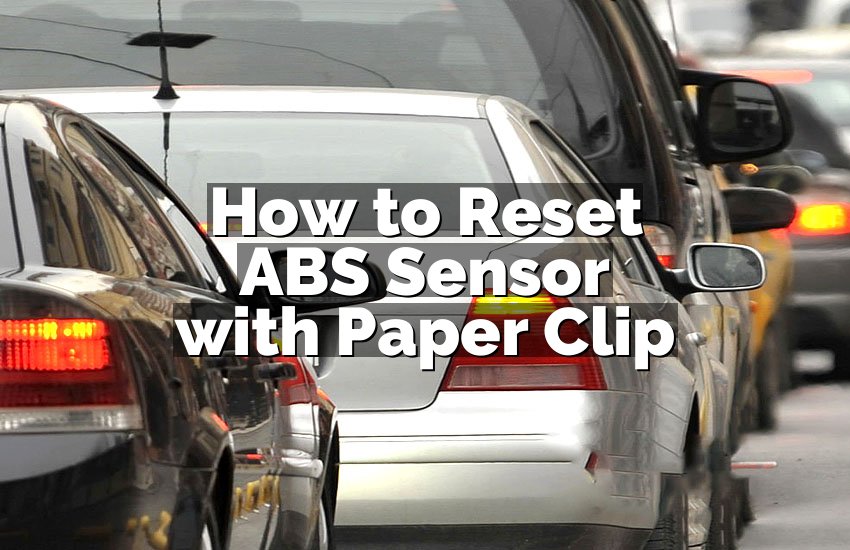You might notice your car runs fine when it’s idling but dies as soon as you give it gas. This can be frustrating and confusing. It often means there is a problem with how the car is getting fuel or air. It could be something small or something more serious.
First, check the fuel filter. If it’s clogged, your car might not get enough fuel. Next, look at the air filter. A dirty air filter can cause problems too. Also, the fuel pump might not be working well. If the pump can’t deliver fuel properly, your car can die when you accelerate. Finally, there could be an issue with the throttle body or sensors.
In this blog post, we’ll break down the common reasons why this happens. We’ll look at possible fixes and what you can do to get your car running smoothly again. Keep reading to find out how to solve this issue easily and get back on the road!
Car Idles Fine But Dies When Given Gas: How to Fix!
If your car idles fine but dies when you give it gas, here are some steps you can take to fix the problem:
1. Check the Fuel Filter
A clogged fuel filter can be a common reason for a car to idle fine but die when you give it gas. The fuel filter is responsible for removing impurities and debris from the fuel before it reaches the engine. Over time, this filter can become clogged with dirt and particles, reducing the flow of fuel to the engine.
To check if the fuel filter might be the problem, locate it along the fuel line or near the fuel tank. It is often a cylindrical or rectangular component with fuel lines connected to it.
Inspect the filter for any visible signs of clogging, such as dirt or rust. If it looks dirty or hasn’t been replaced in a while, replacing it could improve fuel flow and engine performance. A new fuel filter can ensure that the engine receives a steady and clean supply of fuel, which may help prevent stalling when accelerating.
2. Inspect the Fuel Pump
The fuel pump is crucial for delivering fuel from the tank to the engine. If the fuel pump is malfunctioning, it might not provide enough fuel, especially when the engine demands more power, such as when you press the gas pedal.
To check if the fuel pump is working, listen for a humming sound from the fuel tank area when you turn the ignition key to the “on” position. This sound indicates that the pump is operating. If you don’t hear this noise, the fuel pump might be faulty or have an electrical issue.
You can also check the fuel pump relay and fuse to ensure they are functioning correctly. Replacing a faulty fuel pump can resolve issues with fuel delivery and help keep your engine running smoothly, preventing it from stalling when you accelerate.
3. Examine the Throttle Body
The throttle body is responsible for controlling the airflow into the engine. It works in conjunction with the fuel system to ensure the right air-fuel mixture for combustion. If the throttle body becomes dirty or clogged, it can restrict airflow and cause the engine to stall when accelerating.
To examine the throttle body, you may need to remove it from the intake manifold. Look for signs of carbon buildup or debris on the throttle plate and inside the housing. Cleaning the throttle body with a specialized cleaner can help remove any buildup and restore proper airflow.
Make sure to follow the instructions on the cleaner to avoid damaging the throttle body. After cleaning, reinstall the throttle body and test the engine to see if the issue is resolved. Regular maintenance of the throttle body can prevent future problems with engine performance.
4. Check for Vacuum Leaks
Vacuum leaks can significantly affect engine performance, especially when accelerating. The engine relies on a precise balance of air and fuel, and any leaks in the vacuum system can disrupt this balance, causing the engine to stall.
To check for vacuum leaks, inspect the vacuum hoses connected to the intake manifold and other engine components. Look for cracks, holes, or loose connections. A common method to detect leaks is to use a smoke machine or spray a small amount of carburetor cleaner around the vacuum lines and listen for changes in engine idle speed.
If you find any damaged hoses, replace them with new ones. Properly sealing any vacuum leaks will help maintain the correct air-fuel mixture and improve engine performance, preventing stalling when you give the car gas.
5. Test the Mass Air Flow (MAF) Sensor
The Mass Air Flow (MAF) sensor measures the amount of air entering the engine and helps the engine control module (ECM) determine the right amount of fuel to inject. If the MAF sensor is faulty or dirty, it can lead to an incorrect air-fuel mixture, causing the engine to stall when accelerating.
To test the MAF sensor, you can use a diagnostic tool to read any trouble codes related to the sensor. Alternatively, you can clean the MAF sensor with a dedicated MAF sensor cleaner, following the manufacturer’s instructions.
Make sure to handle the sensor carefully, as it is delicate and can be damaged easily. If cleaning doesn’t resolve the issue, you might need to replace the MAF sensor. A functioning MAF sensor ensures that the engine receives the correct air-fuel mixture, improving performance and preventing stalling.
6. Inspect the Spark Plugs
Spark plugs play a crucial role in engine performance by igniting the air-fuel mixture in the combustion chamber. Worn or dirty spark plugs can lead to misfires and poor engine performance, which may cause the engine to stall when you accelerate.
To inspect the spark plugs, you will need to remove them from the engine using a spark plug socket. Examine the condition of each plug, looking for signs of wear, such as worn electrodes, deposits, or carbon buildup. If the spark plugs are dirty or worn out, replace them with new ones.
Make sure to gap the new spark plugs according to the manufacturer’s specifications. Properly functioning spark plugs ensure efficient combustion and help maintain smooth engine operation, preventing stalling and improving overall performance.
7. Check the Idle Air Control Valve (IACV)
The Idle Air Control Valve (IACV) regulates the engine’s idle speed by controlling the amount of air bypassing the throttle plate. If the IACV is dirty or malfunctioning, it can cause irregular idle speeds and stalling when you give the car gas.
To check the IACV, locate it on the intake manifold or throttle body. Remove the valve and inspect it for dirt or carbon buildup. Cleaning the IACV with an appropriate cleaner can help restore its functionality.
If cleaning does not resolve the issue, you may need to replace the IACV with a new one. A properly working IACV helps maintain a stable idle speed and smooth acceleration, preventing the engine from stalling.
8. Look at the Engine Control Unit (ECU)
The Engine Control Unit (ECU) is the computer that manages various engine functions, including fuel delivery and ignition timing. If the ECU is malfunctioning or has outdated software, it might cause issues such as stalling when you accelerate.
To diagnose ECU problems, you can use an OBD-II scanner to check for any error codes related to the ECU. Sometimes, a software update or ECU reprogramming might be needed to fix the issue. In more severe cases, replacing the ECU might be necessary.
Ensuring the ECU is functioning correctly helps maintain optimal engine performance and prevents stalling problems. If you’re unsure about working with the ECU, it’s best to consult a professional mechanic for diagnosis and repair.
I hope this guide helps you figure out why your car idles fine but dies when you give it gas. Remember, issues like a clogged fuel filter or a faulty sensor can cause this problem. If you follow the steps we’ve discussed, you should be able to get your car running smoothly again. Safe driving!
Frequently Asked Questions
How Often Should I Replace the Fuel Filter?
The fuel filter should generally be replaced every 30,000 to 40,000 miles, but this can vary based on your vehicle’s make and model. Check your vehicle’s owner’s manual for the recommended replacement interval. If you notice a decrease in performance or difficulty accelerating, it might be a good idea to replace the filter sooner.
How Can I Tell if My Fuel Pump is Failing?
Signs of a failing fuel pump include difficulty starting the engine, sputtering or stalling while driving, and a noticeable decrease in power when accelerating. You might also hear a whining noise from the fuel tank. If you experience these symptoms, it’s best to have the fuel pump checked by a professional.
What Are the Symptoms of a Dirty Throttle Body?
A dirty throttle body can cause poor engine performance, including rough idling, hesitation when accelerating, and stalling. You might also notice a decrease in fuel efficiency. Cleaning the throttle body can often resolve these issues and improve engine responsiveness.
How Can I Detect Vacuum Leaks?
Vacuum leaks can be detected by listening for hissing sounds near the engine or using a smoke machine to trace leaks. You can also spray carburetor cleaner around vacuum hoses and connections while the engine is running. If the engine idle changes, you likely have a vacuum leak in that area.
What Should I Do If the MAF Sensor is Faulty?
If you suspect a faulty MAF sensor, you can clean it with a specialized MAF sensor cleaner. If cleaning doesn’t resolve the issue, you may need to replace the sensor. Make sure to use the correct replacement part for your vehicle and follow the installation instructions carefully.
How Often Should Spark Plugs be Replaced?
Spark plugs should typically be replaced every 30,000 to 50,000 miles, depending on the type of plugs and your vehicle’s specifications. Regular replacement helps maintain engine performance and fuel efficiency. Consult your owner’s manual for specific recommendations.
What Are the Symptoms of a Faulty IACV?
A faulty Idle Air Control Valve (IACV) can cause erratic idle speeds, stalling when the car is idling, and difficulty accelerating. You might also experience rough idling or a fluctuating idle speed. Cleaning or replacing the IACV can help resolve these issues.
How Do I Know If My ECU Needs Reprogramming?
If you experience issues like poor performance, stalling, or unusual warning lights, it could be related to the ECU. A diagnostic scan can reveal if the ECU needs reprogramming or if there are other issues. Professional assistance is often needed to reprogram or replace the ECU.
Can a Clogged Fuel Filter Cause Engine Overheating?
While a clogged fuel filter primarily affects fuel flow and engine performance, it can contribute to engine overheating if it causes the engine to run inefficiently. Ensure regular maintenance and timely replacement of the fuel filter to avoid potential overheating issues.
How Do I Clean the Throttle Body?
To clean the throttle body, first, remove it from the intake manifold. Use a throttle body cleaner to spray the inside and the throttle plate. Wipe away any carbon buildup with a clean cloth. Reassemble the throttle body and ensure all connections are secure. Follow the cleaner’s instructions for best results.


